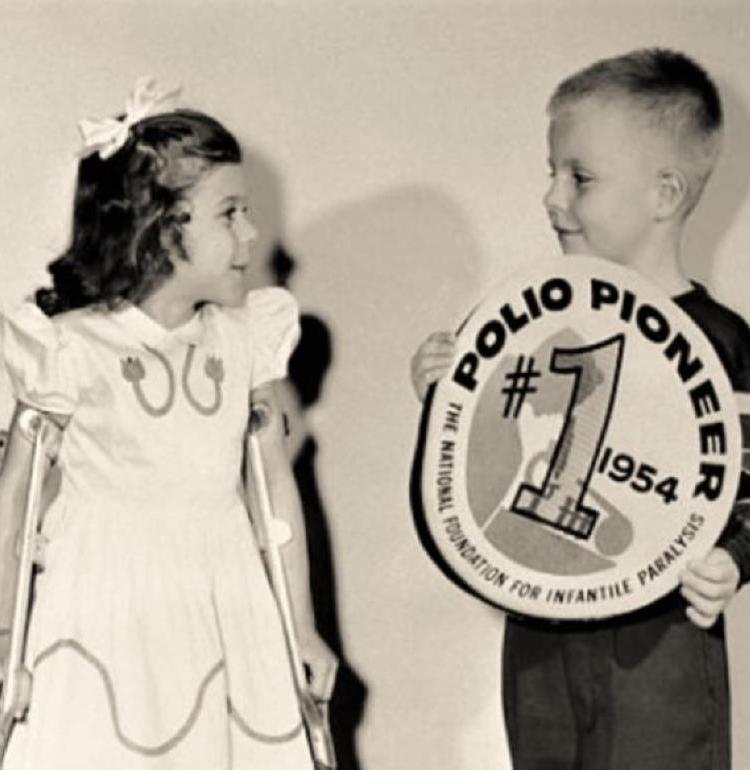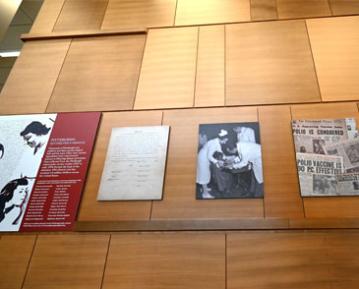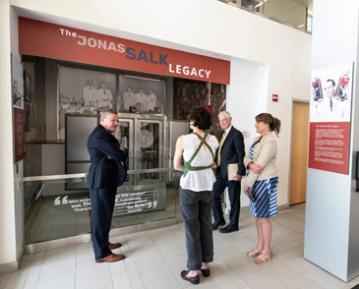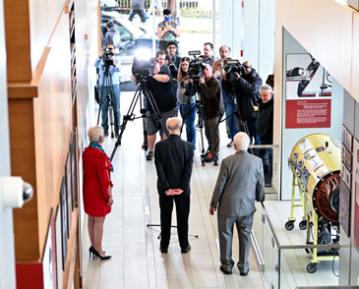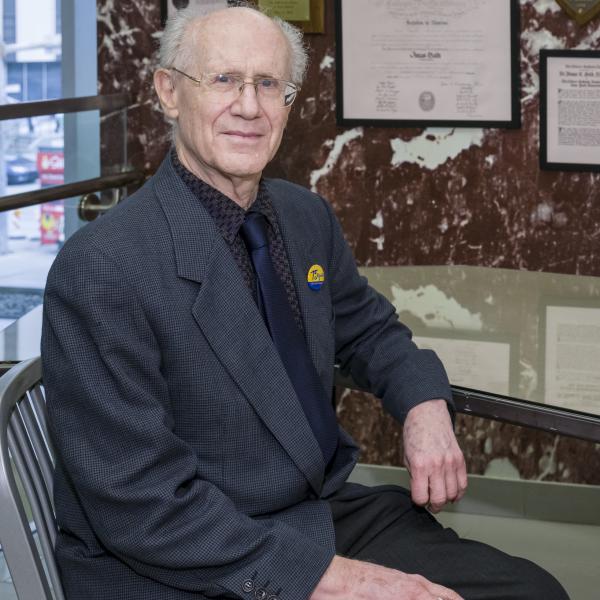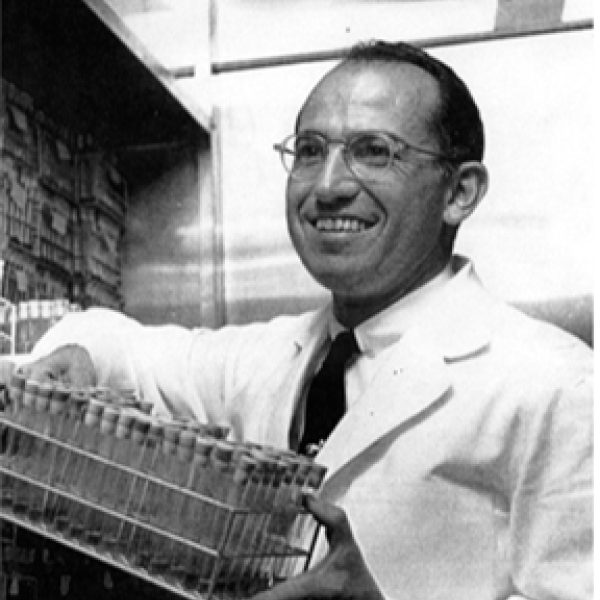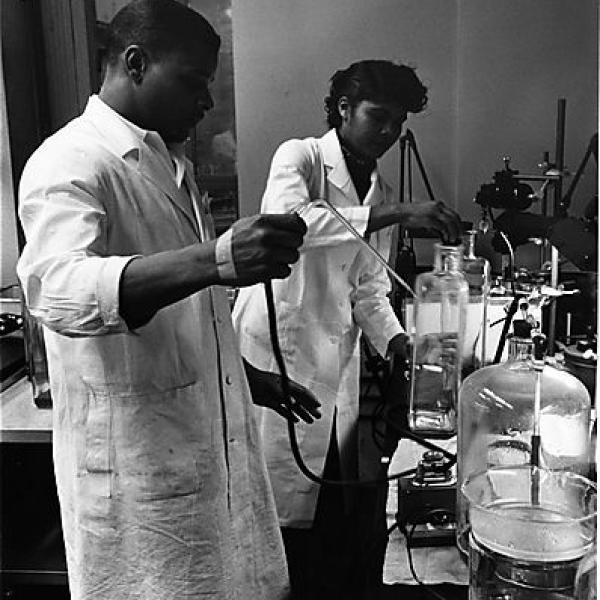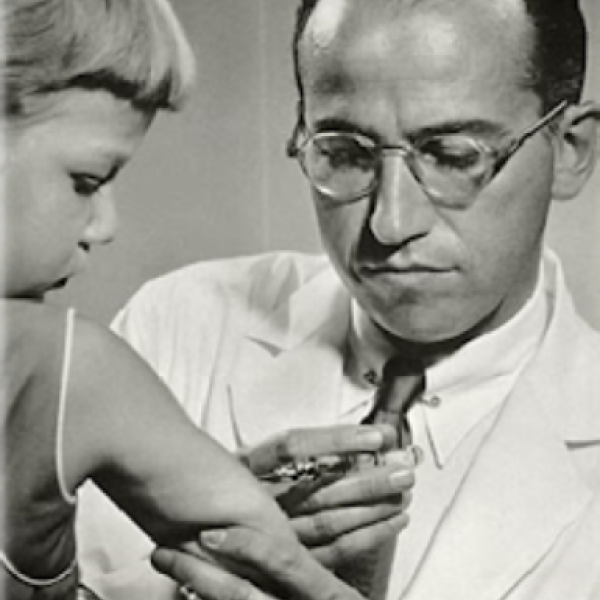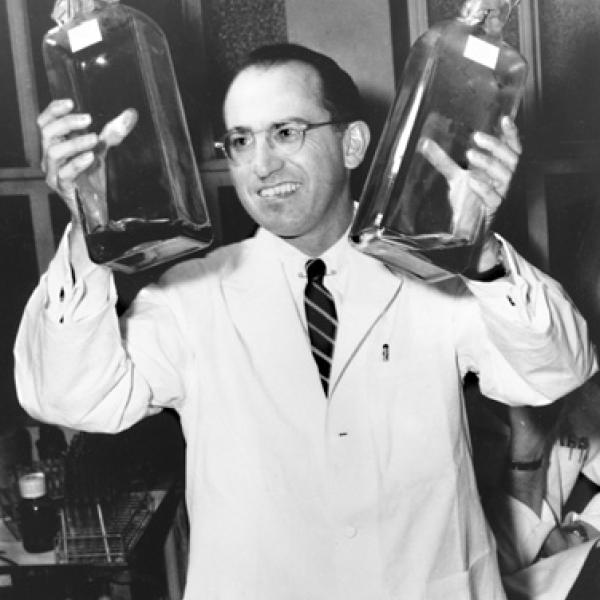Materials Housed at the University of Pittsburgh
Materials displayed in this exhibit are part of a generous gift to the University of Pittsburgh from the Jonas Salk family. Displays were curated by a multidisciplinary team of faculty, staff, and students from the University Library System, the Museum Studies Program, the Office of University Communications and Marketing, and the School of Public Health.
The collection also features many important items not on public display. It includes thousands of individual vaccine trial volunteer parental consent forms, as well as thousands of 3”x5” cards showing the study subject’s name, with dates, vaccines given, and antibody test results. In addition, many lab materials such as financial reports, receipts, equipment, supplies, procedures methodology, and protocol reports are housed at the University of Pittsburgh.
Celebrating a Public Health Milestone
At its peak in the 1940s and 1950s, polio was killing or paralyzing more than a half million people worldwide each year. Frequent epidemics among children led polio to become a highly feared disease. Survivors often faced lifelong consequences. In 1947, the University of Pittsburgh recruited Jonas Salk—an expert in influenza whose flu vaccine is still in use today—to develop a virus program at Pitt. For more than seven years, his team worked tirelessly to develop an effective killed-virus vaccine.
The April 12, 1955 announcement that the team's vaccine was proven to be effective was met with jubilation and called "a summit moment in history" by Newsweek. The Jonas Salk Legacy Exhibit at Pitt Public Health celebrates this public health milestone and achievement of Salk and his Pitt team.
"I look upon ourselves as PARTNERS in all of this, and that each of us contributes and does what he can do BEST." - Jonas Salk
Thousands of Pittsburgh-area children and their parents helped Salk an his team refine their vaccine ingredients from experimental mixture to lifesaving disease prevention. Data collected from the Pittsburgh school polio vaccine studies (1952 to early 1954) formed the basis of the definitive 1954 clinical trial that involved 1.8 million children across the United States.
